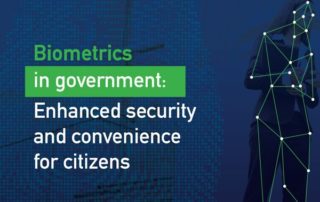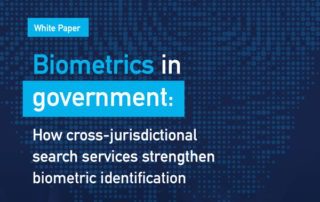Biometrics in government: Enhanced security and convenience for citizens | eBook
Biometrics in government: Enhanced security and convenience for citizens A brief history of biometrics Fingerprint-based identification began in law enforcement. An Argentine detective first solved a crime using a latent print (left behind by the perpetrator) in 1892. In 1901, detectives in England and Wales officially began using fingerprints in criminal identification. Their use snowballed from there. By 1946, the FBI managed a library of 100 million fingerprints, according to the U.S. Marshals Service. The agency developed the Automated Fingerprint Identification System (AFIS) in the 1970s to manage the massive and still-growing collection more effectively. AFIS became “Integrated [...]
Biometrics in government: how cross-jurisdictional search services strengthen biometric identification | White Paper
White Paper Biometrics in government: how cross-jurisdictional search services strengthen biometric identification Governments worldwide rely on passports and the relatively limited biographic information they contain for identification of citizens in a variety of critical applications, such as immigration and border management. But they are increasingly using biometrics to augment their identity proofing efforts. Biometrics such as a fingerprint, face, and iris are more unique, consistent, and fraud-resistant than simple biographics like name and date of birth, making them useful as a conclusive identifier. This is not surprising, considering that the most critical data on passports is arguably the [...]




